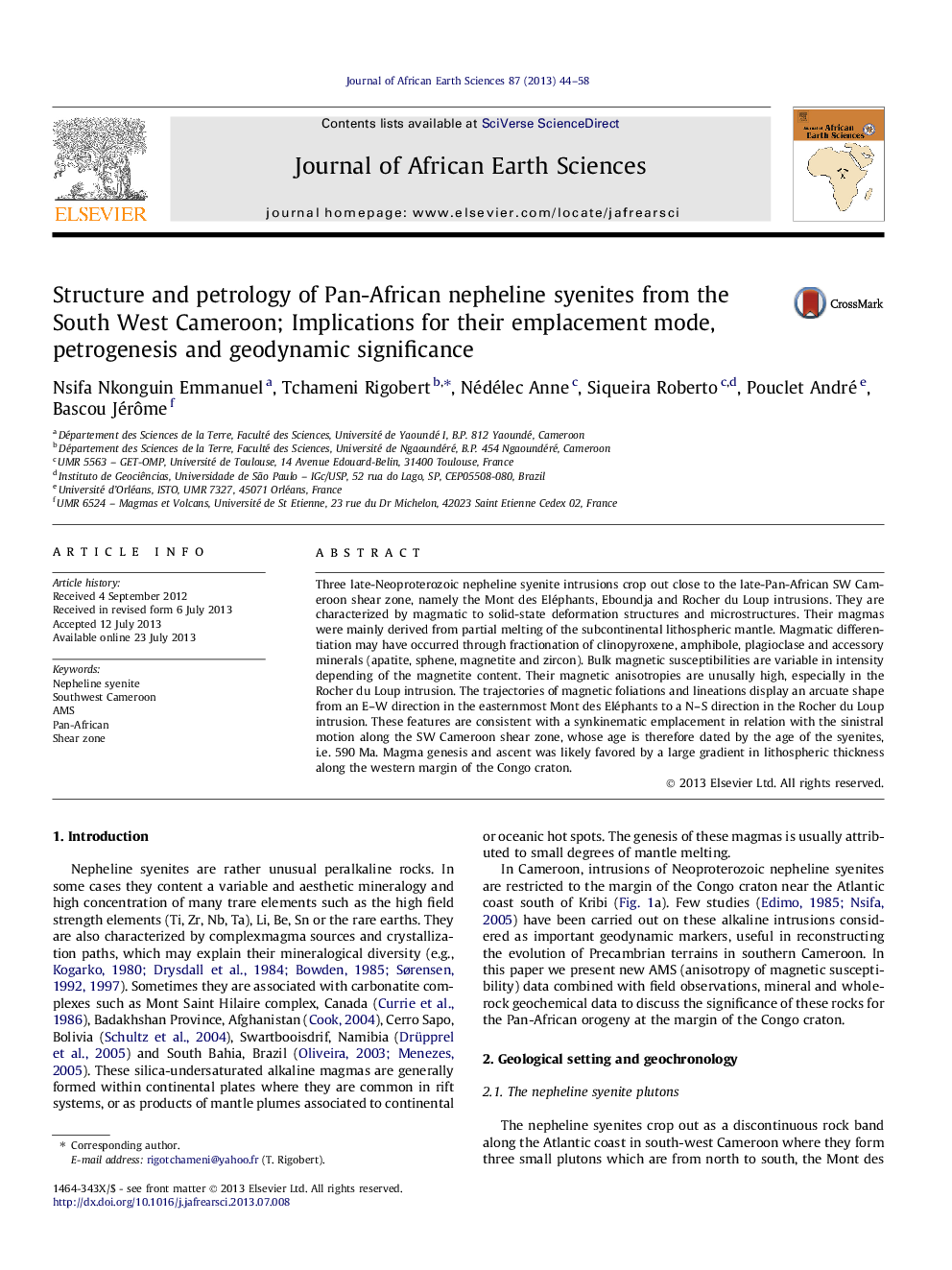| Article ID | Journal | Published Year | Pages | File Type |
|---|---|---|---|---|
| 4728897 | Journal of African Earth Sciences | 2013 | 15 Pages |
•Nepheline syenite plutons were synkinematically emplaced at 590 Ma.•Ijolites and nepheline syenites are related by a fractional crystallization process.•Magma source is the subcontinental lithospheric mantle.
Three late-Neoproterozoic nepheline syenite intrusions crop out close to the late-Pan-African SW Cameroon shear zone, namely the Mont des Eléphants, Eboundja and Rocher du Loup intrusions. They are characterized by magmatic to solid-state deformation structures and microstructures. Their magmas were mainly derived from partial melting of the subcontinental lithospheric mantle. Magmatic differentiation may have occurred through fractionation of clinopyroxene, amphibole, plagioclase and accessory minerals (apatite, sphene, magnetite and zircon). Bulk magnetic susceptibilities are variable in intensity depending of the magnetite content. Their magnetic anisotropies are unusally high, especially in the Rocher du Loup intrusion. The trajectories of magnetic foliations and lineations display an arcuate shape from an E–W direction in the easternmost Mont des Eléphants to a N–S direction in the Rocher du Loup intrusion. These features are consistent with a synkinematic emplacement in relation with the sinistral motion along the SW Cameroon shear zone, whose age is therefore dated by the age of the syenites, i.e. 590 Ma. Magma genesis and ascent was likely favored by a large gradient in lithospheric thickness along the western margin of the Congo craton.
